INTRODUCTION TO DE DURHAM-DURHAM 2019
This summer, fourteen Duke students are spending ten weeks interning at various nonprofits in Durham, North Carolina, and Durham, UK. Our project sites in North Carolina include The Scrap Exchange, Threshold, the Office of Economic and Workforce Development (OEWD), the Durham Literacy Center (DLC), KidzNotes, and the Duke Social Sciences Research Institute. We will spend the month of July in Durham, UK to complete similar internships at various sites (TBD).
Although this program has been in session for less than a week, we have already been immersed in a multitude of enrichment opportunities and events and are making memories with newfound friends. We have had the interesting experience (to say the least) of attending a Beaver Queen Pageant (blog about that to come!), visited the Stagville Plantation, attended a panel organized by DukeEngage on Durham’s Economic Evolution.
We are extraordinarily excited for the weeks to come, and would love to share our experiences with you. If you’re interested in staying updated with our various adventures and escapades during the program, please check back regularly! Here’s to an incredible summer full of growth, friends, and memories that will last a lifetime 🙂
STAGVILLE
This past Saturday, the group made a trip to Stagville Plantation to learn more about the history of Durham and the people who played a role in making it what it is today. To be honest, hauling myself out of bed before 8:00am on a Saturday to visit a plantation wasn’t exactly what I envisioned to be a part of my perfect Saturday. But as we stepped out of the vans and onto the crackling gravel of the parking lot of the visitor’s center, I couldn’t help but wonder what the land beneath my feet had witnessed and had heard long before I got there.
Upon entering the visitor’s center, we were greeted by our tour guide. He was passionate and extremely knowledgeable about Stagville. His profound respect and sensitivity for the people who had been enslaved was obvious, as he carefully referred to them throughout the tour as “enslaved people” instead of “slaves”.
THE HORTON HOME
The first stop on the tour was the home of the Bennehan’s (The Horton Home). We learned many things about Richard Bennehan, the planter who started the plantation in 1776. The guide described the descendants of Bennehan and the way that they treated their enslaved people. When our guide mentioned how domestic slave women were subject to constant sexual assault by not only the master, but visiting men, the room went dead silent. Caucasian features would start to appear in the descendants of the domestic slaves over the course of a few generations.


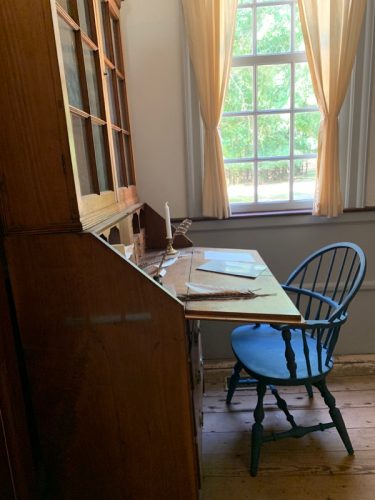

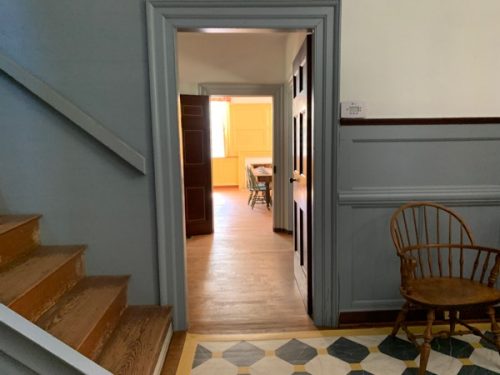
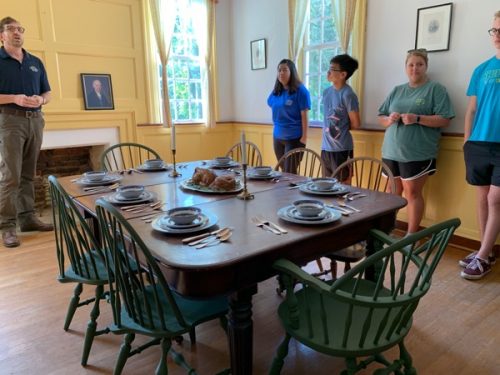
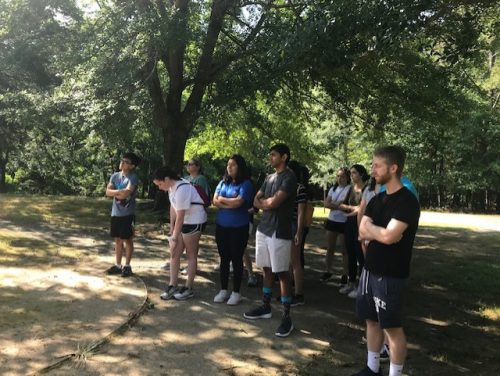

HORTON GROVE
Our second stop was the slave quarters (Horton Grove), which was a short drive down from Horton’s Home. It was located across from the overseer’s home and was noticeably more rundown than Horton’s home. However, these quarters are different from traditional slave quarters. They are elevated on rocks and have a fireplace in each room because Bennehan noticed that his enslaved people were dying off quickly. The doctors presumed that it was because the rooms didn’t have proper ventilation and were too close to the ground. However, unknown to them, the real cause of death among the enslaved people was malaria.

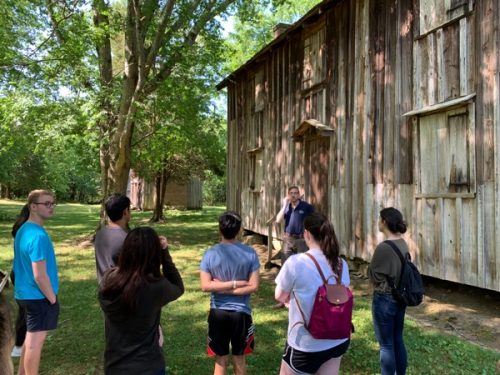



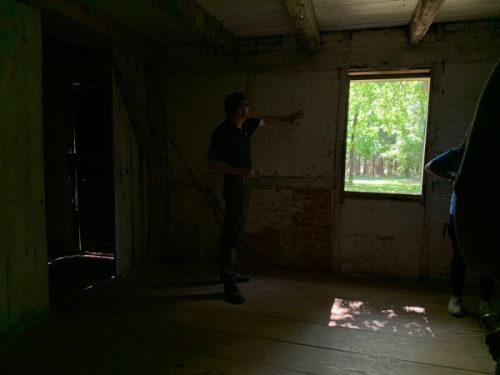

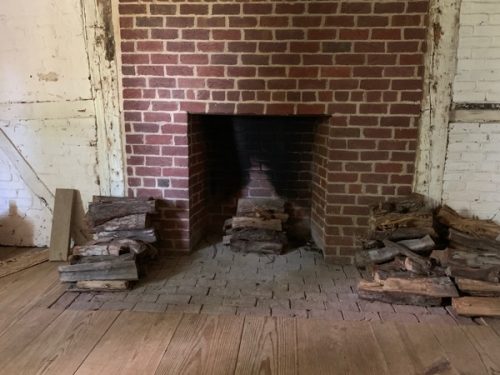
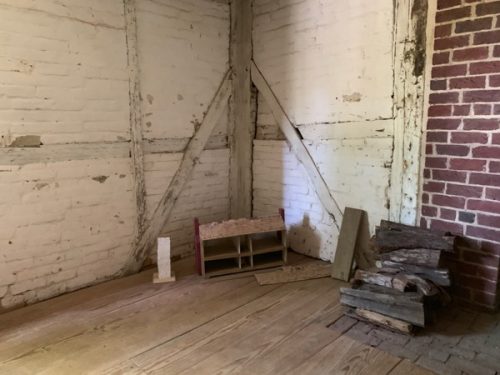
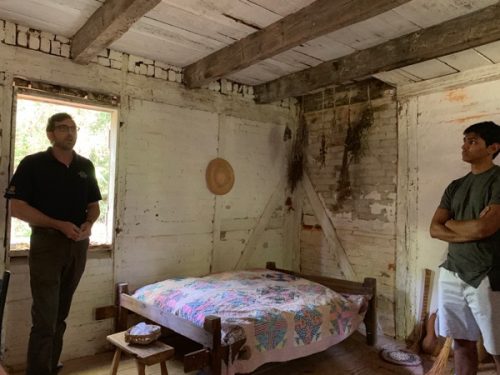



SHARECROPPER’S HOME
Our third stop was inside of a similar building next to the slave quarters that we toured. It was the place that sharecroppers stayed after the Civil War and was essentially a renovated slave home with some furnishings. Sharecroppers were essentially trapped by contract into legal slavery and the Union Army encouraged a lot of former enslaved people to sign contracts that unfairly favored their masters. These contracts put the enslaved people at an extreme disadvantage and at a lesser position of power compared to their master.
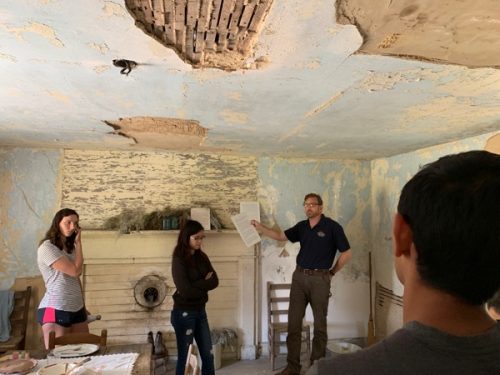
THE GREAT BARN
The enslaved people would store crops inside of the Great Barn during harvest season. They would use mules to help transport the crops to the Great Barn. The Great Barn has survived extremely turbulent weather (hurricanes) and has stood for decades.
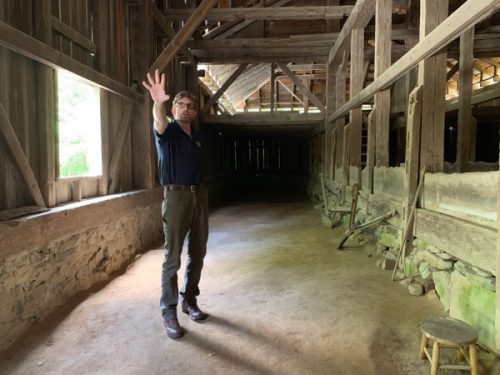

DEPARTURE
The tour whizzed by and before we knew it, we were back in the vans headed back to Duke–but not before snapping this picture!

We also got a group picture in front of the sign before we departed for Duke.

I did not expect to learn so much or enjoy the tour as much as I did. The tour opened my eyes to the brokenness that was caused by horrific injustices hundreds of years ago that are still being felt in society today. Our current societal problems don’t just manifest out of thin air. They have historical roots, and by analyzing those roots, we can better understand how our current issues came about.
Even hundreds of years after the Civil War and the abolishment of slavery, we as a society are very far from fully ensuring that every single person has equal opportunities, equal rights, equal say, and is treated fairly regardless of the color of their skin. Part of our responsibility is to acknowledge our history: the fact that atrocities were committed and perpetuated by people who formerly stood on the land that we now live on and are now commemorated on street signs and buildings and more around us. We must also acknowledge and work to change the ways that people are still being harmed by individuals and institutions that perpetuate patterns of inequality and oppression that led to violations of human rights hundreds of years before.
It is commonly said that history repeats itself. By preserving historical sites such as Stagville and educating future generations about both the good but also the deeply painful and mortifying events of American history, hopefully we can prevent places like Stagville from flourishing in the future. May we stay alert so that this nightmarish part of history never repeats itself again.
